First impressions: Claas Xerion 12.650 takes on US-built artics
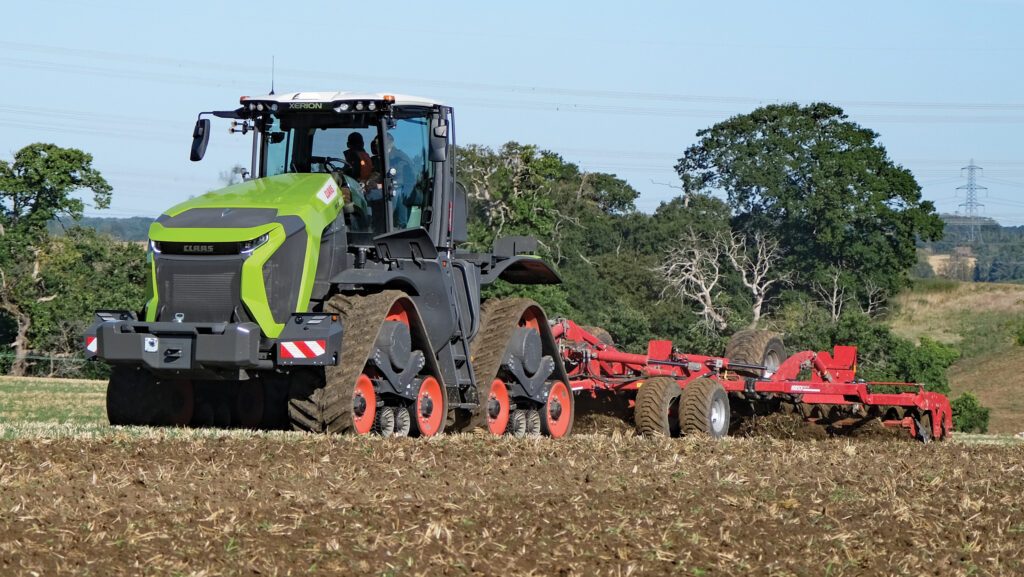 © James Andrews
© James Andrews To the casual observer, Claas’ Xerion 12.650 looks like any other articulated crawler – just a Quadtrac, 9RX, or Versatile Deltatrack dressed in a different outfit.
Yet it’s nothing of the sort.
While those North American-built juggernauts steer by contorting their midriffs, this European powerhouse turns each of its tracks independently.
In this sense, it behaves much like the smaller Xerion that inspired it, and most telehandlers for that matter.
Which is to say that it’s a far more normal thing to drive.
See also: First impressions: John Deere’s bonkers-big 913hp 9RX 830
So, while it does have to compete with the tractors mentioned above, it brings its own unique set of selling points to the fight.
Outright power isn’t a headline grabber in this sector – the six-cylinder Merc puts out 653hp – but it’s enough to make it the gutsiest tractor you can buy fitted with a CVT transmission.
Only Case IH gets anywhere near it, with its 613hp Quadtrac 555 CVX.
Claas Xerion 12.650 CMATIC
- Engine Mercedes 15.6-litre, six-cylinder
- Max power 653hp@1,600rpm
- Max torque 3,100Nm@1,300rpm
- Transmission Eccom 5.5 Cmatic continuously variable
- Linkage lift capacity 13,600kg
- Hydraulic flow (one, two or three pumps) 220, 445 or 537 litres/min
- List price £641,000
A lower powered Xerion 12.590 is also available, which puts out 585hp and 2,850Nm.
Weight distribution is another perk, as there’s no space-robbing pivot point slapped in the middle of the machine.
In its place, Claas has found a home for the socking-great fuel tank, meaning the balance of the tractor shouldn’t be affected as the 1,400-litre lake of derv gradually drains away.
This area also accommodates the air cleaner and a neat side-exit exhaust, so there are no bulky cab-mounted funnels encroaching into the driver’s eyeline.
Custom-built tracks
Designed and manufactured at the firm’s Harsewinkel factory, the Xerion 12 has stereotypically German levels of sophistication.
This starts with the track units, which are built just down the road at Paderborn.
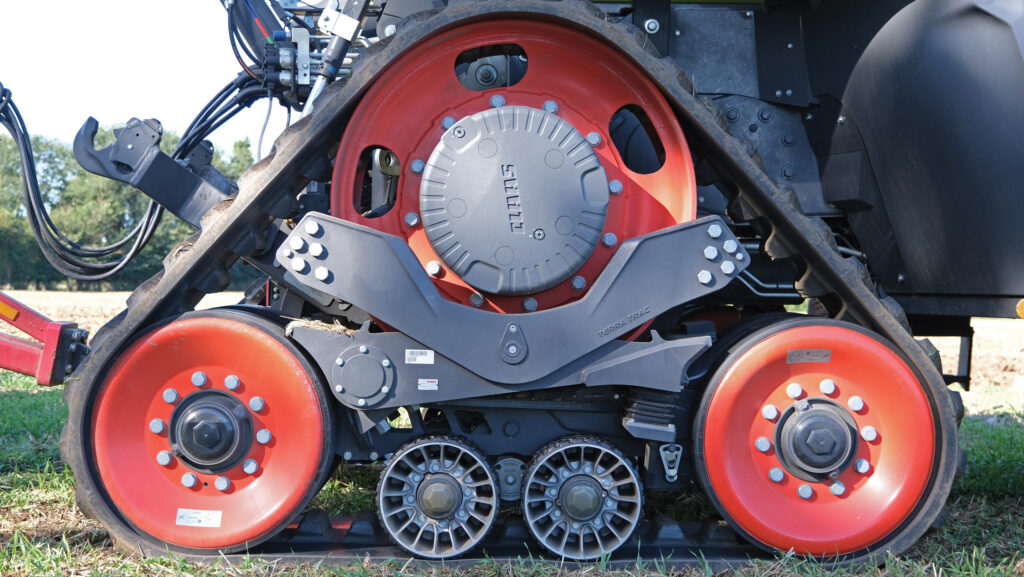
© James Andrews
Claas is by no means new to this game, with decades of experience manufacturing Terra Trac assemblies for its combines, forager harvesters and Axion tractors.
But engineers had to go back to the drawing board to make a version capable of putting so much power to the ground.
This meant sidelining its established flat, friction-drive setup, in favour of new triangular units with physical drive lugs – not unlike those used on its articulated rivals.
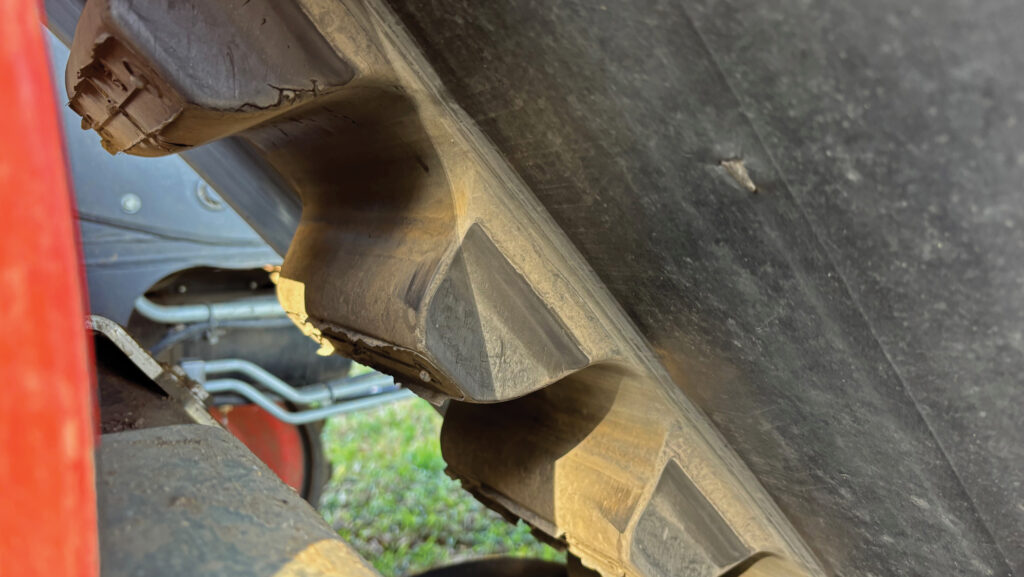
© James Andrews
However, the fact these are fitted onto steering axles, rather than being rigidly attached to the chassis, required them to be constructed rather differently.
Each has its own central support frame, with a nifty scissor-style linkage holding the idlers and separate bogies for the mid rollers; all of which helps them articulate as they pass over lumps and bumps.
This negates the need for a raised front idler, giving the tracks a completely flat base that better distributes weight.
Added to that, the rocking motion provides an opportunity for some shock absorption, with rubber dampers employed to suppress the worst knocks and vibrations.
Claas has also tried to make the transfer of power from the drive wheel to the Camso tracks as efficient as possible.
This has been achieved by creating a tight wrap angle that puts eight and a half of the large rubber lugs in contact with the drive wheel bars at any one time.
How much pulling power?
Unlike the old-school approach of using revs to get power, modern tractor design is all about generating high outputs at low rpm.
To get the 15.6-litre Merc six-cylinder singing to this tune, Claas has fitted it with a compound turbo arrangement, where both a small and large unit work in tandem to give performance throughout the rev range.
The result is that peak horsepower is generated at 1,600rpm and max torque at an even lower 1,300rpm which, by Claas’ reckoning, makes it 8-10% leaner on fuel than its rivals.
More trick engineering has been employed to make the Cmatic transmission handle the amount of power being thrown its way.
Rather than getting its own beefier set of cogs, the 12.650 is fitted with the same Eccom 5.5 setup found in the regular 462-530hp Xerion.
Designers have made this work by slapping an additional gearbox on the front that speeds the output from the flywheel, thus lowering the torque to manageable levels.
Once the CVT box has done its thing, sets of reduction gears come into play, slowing the output speed and ramping the torque back up again.
Can it grip?
To make the most of the power in different situations, Claas provides the Xerion 12 with a couple of ballasting options.
Without any additional metal on board, it tips the scales at 25.5t, which is fairly evenly distributed between the front and rear axles.
This should suffice for light duties, but even for high-speed top work, Claas recommends running it with an 1,800kg block bolted to the front.
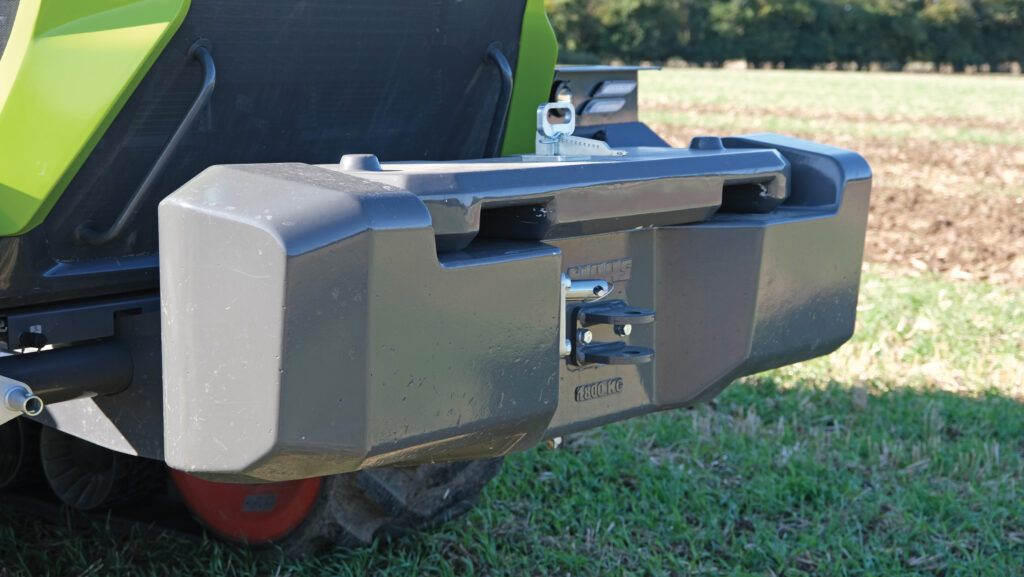
© James Andrews
This can be teamed with an extra 400kg to give a bit of extra grip.
When it comes to more hardcore soil shifting, a 1t lump can be placed on the rear deck behind the cab, bringing the total weight up to 28.7t.
In general, tractors of this type tend to be paired with socking-great trailed implements, meaning the rear linkage is a bit of an afterthought.
But Claas has gone for a suitably heavyweight setup that can lift 13,600kg – a full 300kg more than the Quadtrac 555 CVX can manage.
Hydraulic flow is bordering on the ridiculous too, with the top-flight three-pump setup capable of delivering 537 litres/min.
That’s fast enough to fill a bathtub in about 30sec.
Frankly, it’s overkill for the small number of UK farms that can warrant one of these tractors, which will more likely opt for the dual-pump 445-litre/min or standard 220-litre/min setup.
What’s the cab like?
Big. By lumping an extra 27cm of real estate up front, Claas has created a huge workspace that is only exacerbated by the slim front pillars, unsullied by an exhaust and air cleaner.
Its huge, swollen nose is an unavoidable obstruction, but even this has been shaped in such a way that it doesn’t unduly hamper forward visibility.
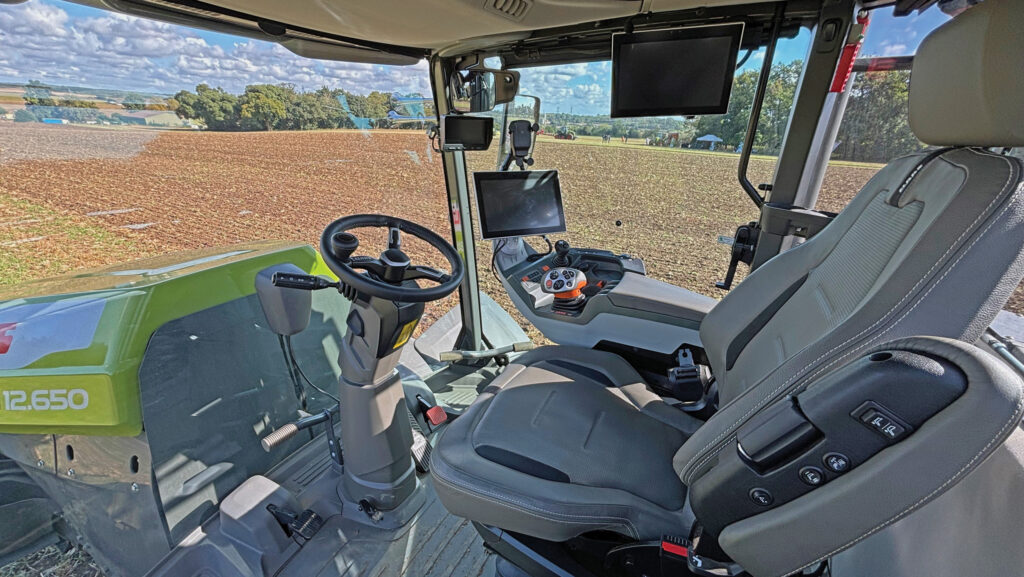
© James Andrews
The seat is large, leather-clad and luxurious, and drivers have the option of not one, but two sets of footrests – one head-on and another on the right A-pillar for kicking back at a comfortable implement viewing angle.
Four-point suspension works in tandem with track unit dampers to smooth out the ride, which is a welcome addition when hacking down the road at its top speed of 40kph.
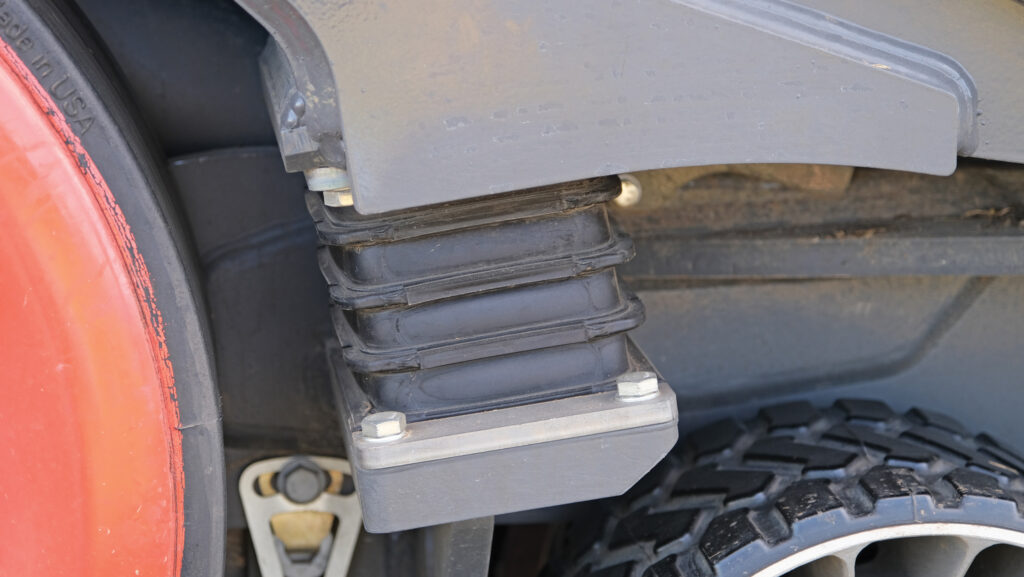
© James Andrews
There’s not much to say about the controls and display, other than the fact they’re virtually identical to any other high-spec Claas tractor – capable and packed with features but perhaps not as user-friendly as some.
Farmers Weekly verdict
High-horsepower crawlers were once as common on large arable farms as herbicide-resistant blackgrass.
But the move to low- and no-disturbance regimes has kicked them where it hurts – not to mention agriculture’s vanishingly small margins.
These days, just 20 or so 500hp plus tractors are sold in the UK each year, meaning there’s a shallow pool – barely a puddle – of potential buyers to win over.
The Xerion 12’s trump card is that it offers something different.
It’s designed and built in Europe, the drivetrain is undeniably slick and it’s surprisingly manoeuvrable for such a hulking machine.
Perhaps Case IH and John Deere should watch their backs…
Likes and gripes
Likes
- Large cab with good visibility
- Easier to drive than an artic
- Good weight distribution
- Smooth transmission
Gripes
- Unproven
- Controls less intuitive than some
- More complex than rivals

